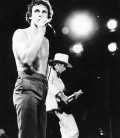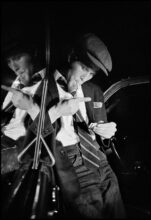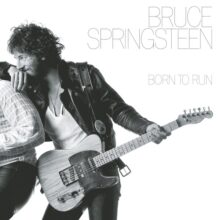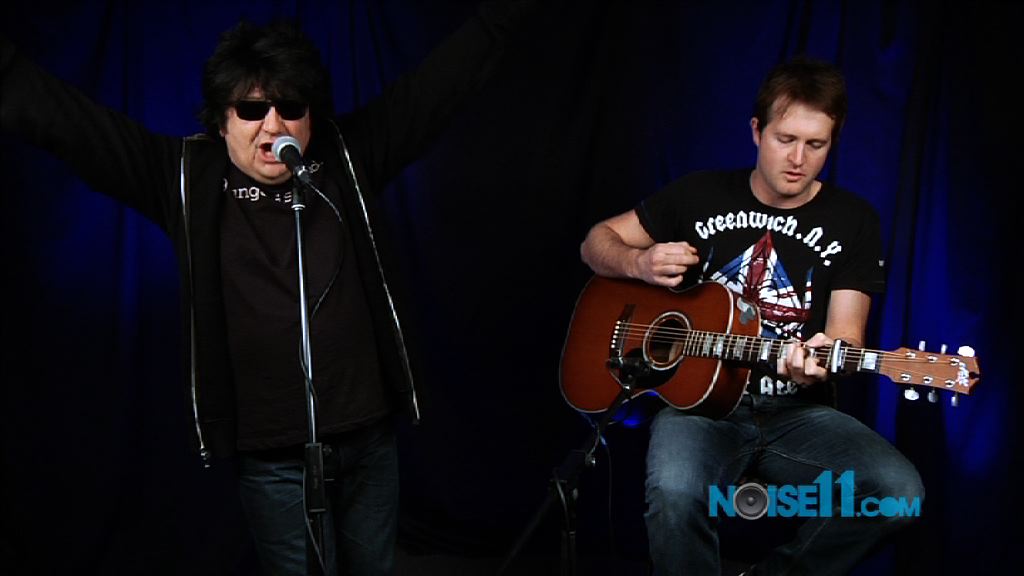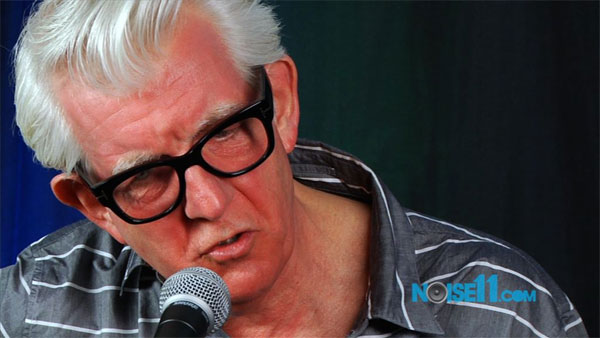When Rod Stewart released Atlantic Crossing in August 1975, it marked one of the most dramatic pivots in his career. Not only was it his sixth studio album, but it was also his first recorded entirely in the United States, following his move from London to Los Angeles. The title itself is a cheeky nod to that relocation, signalling that Stewart was ready to embrace a more polished, Americanised sound — and perhaps, a broader commercial reach.
The album sits at a fascinating juncture in Stewart’s catalogue. His first five solo records (An Old Raincoat Won’t Ever Let You Down, Gasoline Alley, Every Picture Tells a Story, Never a Dull Moment, and Smiler) were heavily steeped in British folk-rock, R&B, and roots influences, often overlapping with his work as lead singer of the Faces. By the mid-70s, however, Stewart was feeling the pull of the slicker, more radio-friendly production styles emerging in the U.S., as well as the lure of avoiding the UK’s high income tax rates.
Atlantic Crossing was the first of his albums to be produced by the legendary Tom Dowd, a figure associated with icons like Aretha Franklin, Eric Clapton, and the Allman Brothers. Dowd brought a level of studio precision Stewart hadn’t pursued before, using top-tier American session musicians, including members of Booker T. & the MG’s and the Memphis Horns. The result was a more soulful, polished, and transatlantic sound that would define Stewart’s commercial peak in the late 1970s and early 1980s.
The record is split into two thematic halves — “Fast Side” and “Slow Side” — a nod to the LP format and Stewart’s desire to present both his rock swagger and his romantic balladeer side. The “Fast Side” is full of upbeat rockers and rhythmic pop tracks, while the “Slow Side” leans heavily into ballads, torch songs, and soulful interpretations. This sequencing gave Atlantic Crossing a distinctive structure that kept both sides of Stewart’s musical personality in the spotlight.
Commercially, the album was a hit. It reached No. 1 in the UK (his fourth UK chart-topper) and No. 9 in the US, going on to sell millions worldwide. Its lead single, a cover of the Sutherland Brothers’ “Sailing,” became one of Stewart’s signature songs, hitting No. 1 in the UK and remaining in the public consciousness for decades.
In hindsight, Atlantic Crossing was the beginning of Stewart’s shift from a gritty, raspy-voiced rocker into a global superstar capable of dominating the pop charts. For some fans, it represented a loss of the raw edge of the early 70s; for others, it was the start of an exciting new chapter that would keep him relevant for decades.
Track by Track
Fast Side
1. Three Time Loser
Opening the “Fast Side” with a groove-driven rocker, “Three Time Loser” is one of the most playful tracks in Stewart’s catalogue. The song features funky guitar lines, a swaggering vocal delivery, and lyrics that combine self-deprecation with Stewart’s cheeky humour. It’s a confident, American-sounding opener that sets the tone for his new direction.
2. Alright for an Hour
Written by Stewart with long-time collaborator Kevin Savigar, this track has a punchy, upbeat drive anchored by strong rhythm guitar and Memphis-style brass. The song’s energy and catchy chorus make it one of the album’s hidden gems, even though it never became a single.
3. All in the Name of Rock ’n’ Roll
Here Stewart leans into a straightforward, good-time rock anthem. It’s one of the most Faces-like moments on Atlantic Crossing, echoing his earlier barroom rock’n’roll spirit. The piano and horn arrangements give it a bigger, more polished feel than his pre-’75 work.
4. Drift Away
A cover of Dobie Gray’s classic 1973 soul hit, “Drift Away” was a bold choice for the “Fast Side.” Stewart’s version is faithful but infused with his signature rasp and a slightly more urgent tempo. The Memphis Horns shine here, giving it a warm, enveloping sound.
5. Stone Cold Sober
Closing the “Fast Side” is this rollicking, horn-driven rocker. It’s perhaps the most high-octane track on the record, with Stewart spitting out the lyrics over tight guitar riffs and a propulsive rhythm section. It’s a natural closer for the energetic half of the album.
Slow Side
6. I Don’t Want to Talk About It
Written by Danny Whitten of Crazy Horse, this ballad became one of Stewart’s most enduring love songs. His interpretation is tender and understated, with pedal steel guitar adding a bittersweet country flavour. While it wasn’t a single in 1975, it later became a UK No. 1 in 1977 when released as a double A-side with “The First Cut Is the Deepest.”
7. It’s Not the Spotlight
This deep-cut ballad, penned by Gerry Goffin and Barry Goldberg, is a masterclass in slow-burn soul. Stewart’s restrained vocal performance allows the song’s emotional weight to shine through. The organ and guitar interplay evoke the feeling of a smoky, late-night bar performance.
8. This Old Heart of Mine
Stewart’s first crack at the 1966 Isley Brothers Motown hit. While he would revisit it in 1989 as a duet with Ronald Isley, this version is looser and drenched in warm Memphis soul arrangements. It fits perfectly within the “Slow Side” mood, mixing nostalgia with vocal charisma.
9. Still Love You
One of Stewart’s own compositions, “Still Love You” is a heartbreak ballad that showcases his ability to pour vulnerability into a song without losing his trademark grit. The sparse instrumentation and gospel-tinged backing vocals add emotional depth.
10. Sailing
The album closes with its most iconic track — a soaring, heartfelt rendition of the Sutherland Brothers’ “Sailing.” Stewart’s version is expansive, with sweeping strings, organ, and a deliberate pace that builds to a majestic finale. In the UK, it became a cultural touchstone, re-entering the charts in later years and being used in television, film, and charity broadcasts.
Atlantic Crossing is a dividing line in Rod Stewart’s career. Before this record, Stewart was the gravel-voiced, denim-clad rocker equally at home with folk ballads and pub-rock stompers. After it, he increasingly embraced international stardom, hit singles, and the kind of polished production that appealed to both pop and adult contemporary audiences.
Some fans lamented the perceived loss of grit, but the album’s quality and craftsmanship are undeniable. It introduced him to a larger U.S. audience, cemented his ability to handle both high-energy rockers and tender ballads, and demonstrated his willingness to evolve.
In many ways, Atlantic Crossing set the template for Stewart’s late 70s and 80s output — a balance of soulful covers, self-penned tracks, and carefully sequenced albums that catered to multiple sides of his artistry. It may not have the ragged charm of Every Picture Tells a Story, but it remains one of the most important records in his discography, marking the moment when Rod Stewart truly became an international star.
Stay updated with your free Noise11.com daily music news email alert. Subscribe to Noise11 Music News here
Be the first to see NOISE11.com’s newest interviews and special features on YOUTUBE and updated regularly. See things first SUBSCRIBE here: Noise11 on YouTube SUBSCRIBE
Noise11.com
Follow us at https://bsky.app/profile/noise11.bsky.social
Noise11 on Instagram
Comment on the news of the day, join Noise11 on Facebook


